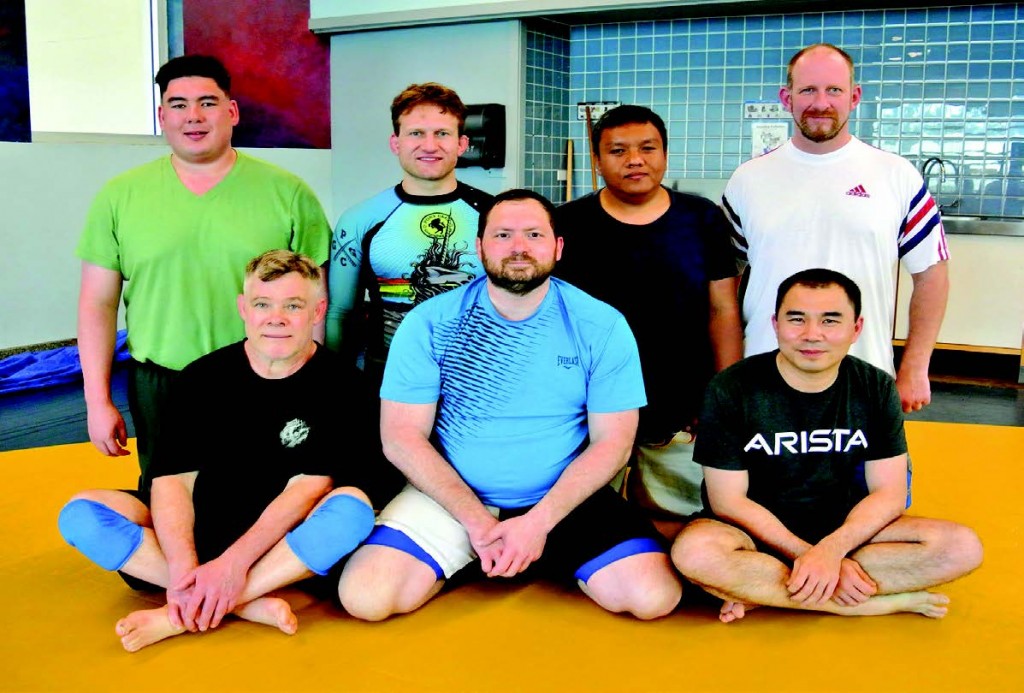 You’ve just said goodbye to your friends after a fantastic night out. You don’t have a care in the world and nothing can get you down. It’s the best feeling ever! Without warning, something or someone strikes you from behind and you are down. What do you do? Your self-defense class taught you how to defend against attackers from the front and from the back, but not from the ground. You think to yourself, “Now what do I do?”
You’ve just said goodbye to your friends after a fantastic night out. You don’t have a care in the world and nothing can get you down. It’s the best feeling ever! Without warning, something or someone strikes you from behind and you are down. What do you do? Your self-defense class taught you how to defend against attackers from the front and from the back, but not from the ground. You think to yourself, “Now what do I do?”
Michael Fuhrman, who teaches the art of ground combat, explains, “Most fights end on the ground; that’s why self defense’s most useful application is on the ground.” Grappling or Brazilian Jiu-jitsu is based on the premise that fights are rarely confronted standing up 100% of the time. More often than not, at some point, the fight will be on the ground, and the person who knows how to defend and attack from the ground is usually the winner. Michael illustrates this point poignantly: “The victim (or you) usually ends up on the ground first. The attacker, however, has to come closer to the ground towards you, and that’s when you can go on the offense using grappling techniques to disable or even cause great damage to the attacker.”

He added, “When on the ground grapplers use all five appendages (including the head) and the body to attack, that’s a major advantage.” Another important attribute of grappling according to Gene Folgo, a black belt in Brazilian Jiu-jitsu, is the practicality of the art. “Grappling is live,” he said. “When you are engaged with an opponent, anything–including new movements–can happen.” In other words, opponents don’t necessarily fall, roll and attack in a manner that is expected based on your own moves.
John Wenstrand, a former wrestler, added that “grappling is very pensive or thoughtful, and requires patience as well as being meticulous.” In fact, every grappler interviewed for this article expounded on these same principles regarding grappling. Bjorn Stade, a newcomer to the sport, enthusiastically explained how he’s always thinking and looking for opportunities while grappling an opponent.
Although a thoughtful sport, grappling is still a very aggressive endeavor without specific safety or fail-safe rules used in wrestling and other martial arts. Grapplers must display great sportsmanship and know when to stop and when to start, based on the opponent’s reaction. Thomas Boyer, an avid grappler, explained, “In wrestling, a wrestler is on his back (a very vulnerable position) for a few seconds, then the referee would reset the wrestlers. In a grappling bout, a grappler may spend the entire time on his back trying to get to a winning position.”
“Grappling is also a great form of exercise while building strength, stamina and skill,” said David Reuchelle. Given that he’s 6’3” and 270 pounds, grappling David is no easy task. Many men can attest to that. Because grappling is a ground art, the ground neutralizes some of David’s size and strength that would enable smaller and less strong opponents to compete and defeat him. For this reason, and the thoughtfulness of the sport, Michael Fuhrman stresses how grappling skills can save lives. In real life, there is no reset. There will be no referee telling the attacker to stop.
For more information regarding grappling:
https://www.facebook.com/groups/warriorbarotherssf/
http://www.meetup.com/Warrior-Brothers-San-Francisco/members/5873177/
John Chen, a UCLA alumnus and an avid sports fan, has competed as well as coached tennis, volleyball, softball and football teams.
Recent Comments